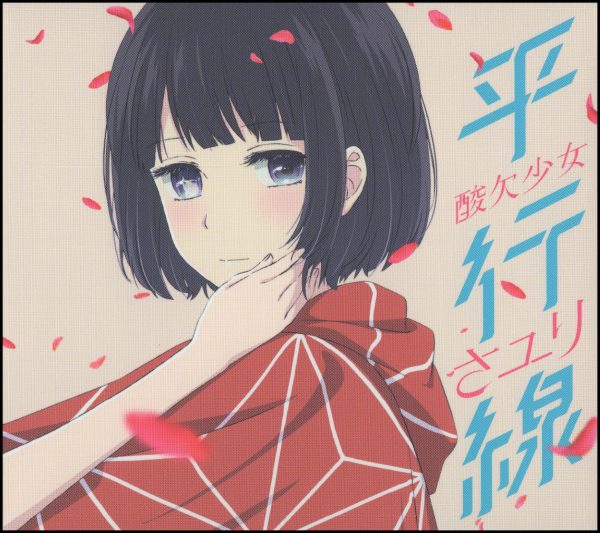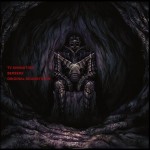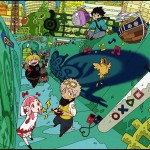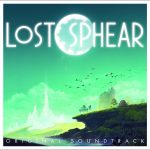
Lewd. Tawdry. Filthy. Perverse. Smut.
For decades, those were the words that I associated with virtually all “hentai” Japanese animation and erotic games (eroge). They may have had better plots and production value than a cheesy American porno, but their express purpose was to titillate and turn on. That not only made me uncomfortable, it left me with a moral dilemma time after time; more often than not, I sided with team chaste over time libertine.
(And I won’t even begin to get into concepts like “fan service” or bouncing breasts “chichi yuri.” It’s all quite childish to me. This is not a judgment to any of you who are fans. It’s just where I stand.)
While I very much doubt that this is the first TV anime to break the mold, it is the first one to which I’ve been exposed. Which is to say, I finally found a piece of Japanese pop culture that took on the topics of sex and romantic relationships with some nuance and maturity. I found something I didn’t even know I wanted in Scum’s Wish.
Last year, Fuji TV aired the 12-episode anime adaptation of Mengo Yokoyari’s manga Kuzu no Honkai, which had the unfortunate translated title Scum’s Wish (note: this was not a decision on the part of localization; the title existed from the start in the Japanese manga). Amazon added the English-subtitled localization of the show to their premium channel “Anime Strike,” which is now-defunct, meaning anyone with an Amazon Prime account can now access the show without incurring any additional charge. I would implore you to do so, perhaps before reading the following reviews. We have a lot of ground to cover.
While I will be referencing concepts from the TV show, before continuing on to the music reviews, I cannot state enough how much this anime impacted me. It’s been almost a year, and generally, a week doesn’t go by that I don’t have some memory of the anime or some other reason to recall it. Recently, after (painstakingly) tracking down all the music for Scum’s Wish, I’ve had all the more reason to think on it. But this is not a review of the show itself. I would encourage readers, alongside watching the show, to brush up on the general concept and background of the show by browsing the associated Wikipedia page. The tl;dr — this is a show that is honest about sex, romance, unrequited love, and more. There is no explicit visual content. It is both painfully specific, and surprisingly universal, in scope.
A final note, before the jump: Kuzu no Honkai more accurately translates as follows: “Kuzu” is a term for trash, waste, something used up and discarded. “Honkai” translates to a long-cherished desire, a very deeply-held wish. Something to consider when watching the show, when listening to the OSTs and the singles: who is doing the judging of a human (self or other) as “kuzu” and why? And what are the “honkai”s that rest deep within each character, and within everyday people? Okay, enough existential thought. On to the music!
There are four music releases associated with Scum’s Wish. Sadly, Aniplex chose note to publish a single, retail OST with all of the anime’s BGM. Instead, they released two “Mini OSTs” whose combined run-time is 43 minutes (about 21 minutes per disc). And, to acquire these albums, you have to purchase either the DVD or Blu-ray Limited Edition for Vol.4 and Vol.5, respectively. Oh yes, Aniplex releases these shows to own at a premium: 5000 or 6000 yen each (Blu-ray costs 1000 yen more), with two episodes per volume, for a total of six volumes. Much as I love this show, I can hardly approve of the unscrupulous profiteering, though I know it’s nothing new. I also disapprove based on the capacity of the medium alone … the OST could be combined to a single CD, and the whole TV series could probably fit on one or two Blu-ray discs, depending on the number of extra features included.
Now, I have to say, the first thing about Scum’s Wish in terms of audio was the op/ed material. And we will get to that, I promise! But first: the mini-OSTs!

Purchase via CDJapan: Vol.4 DVD LE | Vol.4 Blu-ray LE (contains Mini-OST Vol.1, ANZX/ZB-12428)
Purchase via CDJapan: Vol.5 DVD LE | Vol.5 Blu-ray LE (contains Mini-OST Vol.2, ANZX/ZB-12430)
The BGM composer for Scum’s Wish is Masaru Yokoyama. Is that name unfamiliar to you? Maybe you’ll recognize him from one of his many, many works credited on vgmdb. For me, the stand-out previous work is for STEINS;GATE SYMPHONIC REUNION, a rare treat (how many Visual Novels get an orchestral arrangement album?). Yokoyama contributed four arrangements to this two disc set of fantastic music, and I loved his work on this album. So, when I found out that beautiful music I heard in Scum’s Wish came from the same man, I was well-pleased, and I was quickly able to identify some of Yokoyama’s muses for his work on this project.
For example, the piano. Yokoyama’s entire soundtrack for Scum’s Wish is definitely piano-centric. From the title music (track 1, Mini-OST 1), to the emotionally stirring “Substitute” (track 7, Mini-OST 1), all the way to the brilliant and hopeful “Sparkling” (track 9, Mini-OST 2), Yokoyama tends to keep the piano front and center. It can be backed by strings, by electronic/ambient synths, or stand alone. It can be rooted in rhythmic patterns, complete with percussion, or it can be free-form. But, whatever it is, almost all of the 20 tracks across the two Mini-OSTs put the piano in the limelight. Not a bad choice!
What I love most about the background music for Scum’s Wish is how absolutely appropriate every little audio cue is in the context of the TV Anime itself. Contextualizing the music increases its emotional power exponentially. Strange, exploratory songs like “At First, Somehow” (track 6, Mini-OST 1) may leave the uninitiated listener thinking “wow, this is great music, but why doesn’t it go anywhere? Why doesn’t it return to whence it came? This feels less like a piece of music and more like a rough sketch.”
But, once you have heard the song in the context of a particular episode, the music makes perfect sense. And the music seems to describe a particular emotion that I suspect many of us have felt. There are emotions so specific that we don’t have words in our language to capture them, though other languages might have such a word. What one word captures the emotion for a combination of hope and longing but with a nagging sense of defeat … like, you have the premonition that it will all go wrong, but you go in with your best foot forward anyway? There may be a single word to encapsulate that. But, if there’s not, there is this song to replace such a word.
Yokoyama also wrote two vocal pieces for the show: “LOTS OF LOVE” and “Little Little Princess” (tracks 4 and 5, Mini-OST 2). These songs, performed by Natsumi Kiyoura, have all English lyrics written by Evan Call.
I have plenty to say about “LOTS OF LOVE,” especially because it marks the midpoint in the TV show — alongside being a song title, “LOTS OF LOVE” is the title for episode 7 of the 12 episode series. There is a lot that happens here, and a lot of it is dark and mischievous. When we ask the question “What is love?,” if we can stop ourselves from breaking out into a ’90s dance song, we have to wonder where and how it intersects with romance and sex. The fact that Japan has establishments called “love hotels” that exist exclusively for the sake of hook-ups reminds us of the ridiculous false equivalence of two very different words, two very different concepts, with perhaps less overlap than we care to admit. And, as the TV show reminds us, even teenagers (with hormones ablaze) are smart enough to know the difference.
But, if we conflate love and sex, “LOTS OF LOVE” may well be the mantra for a certain character in the show. Someone who is deeply damaged, who hides their insecurities by winning over (i.e., bedding) as many lovers as possible. The vocal theme song accompanying this episode, and the misadventures of at least one character in the show, gives off an almost burlesque carnival sound. It is absolutely fitting.
I would be remiss if I did not also mention “I’m Here For The Warmth” (track 7, Mini-OST 2). This song is also the episode 2 title, and it makes a reprise near the end of the show, as it happens to be a musical cue for two individuals (no spoilers here!) who cannot be a couple, no matter how badly one wants it, and no matter how badly the other would grant it, if only they could. I found it refreshing to see this show consider not only the struggles of romance and sex, but the added complication of incompatible sexual orientation among close friends. Unrequited love in such a situation, I can only imagine, must be its own kind of hell. And yet … we get through it. Masaru Yokoyama expresses all of this through music, through what feels like a kind of miraculous osmosis. I imagine he looked at a storyboard or read the Manga and said “yes, I know what that ought to sound like.” And this is it…
As I pondered what made this music so good, and did the research to prepare this review for you, dear reader, I came across so many comments on Wikis, on YouTube, and other sites, where people declared this one of the best shows, and one of the best soundtracks, of the past few years. And yet, Aniplex still failed to publish a retail soundtrack. I waited this long to write this piece partially because I was holding out hope for a retail soundtrack. When it never happened, I caved in, bought some Japanese DVDs I have no intention of watching, and instead chose to treasure the two bonus CDs that came alongside. Am *I* here for the warmth? If the warmth is the music, then yes: I too am here for the warmth.
And now, it’s time to talk about the wildly catchy and simultaneously thoughtful opening and ending themes for Scum’s Wish. Because these theme songs are sold as singles, I am actually going to discuss the B-Sides on each single as well … though not used in the show, they tend to tie in with the show’s themes very well. Now, to start, we have “uso no hibana” by 96neko!

Purchase via CDJapan: SRCL-9351~2
Now, this gets complicated: for both the opening and ending singles, there are three versions of each single. In this case, I am reviewing the Limited Edition single that was associated with Scum’s Wish (as the artwork would imply), and that is catalog number SRCL-9351~2. The other versions are SRCL-9348~9 and SRCL-9350. Those two releases are focused around the artist more than the anime, and feature different B-Sides. 9350 is a single disc “standard edition” version of 9348~9, in that it does not have the extra DVD disc with a music video.
“uso no hibana,” which roughly translates to “Spark/Beginning of a Lie,” is one of the most intense opening themes I have ever heard in anime. And yes, I have heard the opening for Attack on Titan Season 1, and I love Revo as much as the next guy/gal/person. But this song features vocalist 96neko (pronounced “Kuroneko,” translating to “black cat”) singing at breakneck pace. This song belongs in DDR or some other rhythm game equivalent. She’ll come in on a syncopated upbeat of 4, just before the measure’s downbeat, hold it for the slightest bit of time, and then burst into a barrage of constant 8th notes for each and every syllable. The only rest she gets is a complicated one: hitting upbeat after upbeat during a section of the chorus.
Then there’s the music. Both composition and performance, it is highly polished, top-notch Japanese pop at its finest. Not only do I have no complaints, I have a glowing endorsement! Here, just listen for yourself:
Incredible. And, huge thanks to 96neko for getting an international VEVO account, so this video won’t be pulled down for copyright infringement. This version of the song is longer than the TV Opening (the song and animation would normally end at 1:26), and acts as a lyric video for the full version with lots of additional stylized animation from the show. Take it in, people.
The lyrics, though? Well … that’s what makes it all so very intense. The frantic and phrenetic pace feels like the dizzying experience of love mixed with uncertainty and anxiety. The lyrics match up well. Based on Amazon’s translation, here is the first verse and chorus:
I want to treasure the most / What is most precious
But even something so simple / Is the one thing I can’t do
“If destiny is real, then you are the one person I’m destined to be with”
Those are the words I can’t say / Because I’m scared it will destroy what we haveEven when you’re near you feel so far
This feeling that comes and goes:
“Give up” / “Don’t give up”
The petals I pick are never-endingThe treasure box remains locked / Embracing the sparkling feelings
Hiding the faintly colored fragments / In my sighsIf our eyes meet / Please, don’t look away
See through this lie I’ve locked away
I don’t know how much more I can take
So, please, don’t say anything yet……It hurts, I love you so much / It scares me
Call it low-brow or a bunch of teen angst, if you must. After all, I passed judgment on a whole range of media content based on what I find objectionable. Perhaps you feel the same when you read these lyrics. Young-Adult Twilight garbage. Maybe…? But if you’re honest with yourself, you more than likely felt these feelings and thought these thoughts. And not just in middle school, or high school. The fangs of love can be sharp, jaws clenched tight. If you are caught up in something more than passing infatuation, these feelings can still hit you. Especially that last line: “I love you so much that…” it hurts? It’s scary? I’d rather avoid it, ignore it, suppress it? There’s nothing Y/A about that, as far as I’m concerned. That’s part of the human condition.
Now, depending on which version of the single you purchase, you get different B-Sides. Having purchased the Scum’s Wish-friendly version, I got “Hitorigoto” (“Monologue”) for track 2, and “Raspberry Monster” for track 3. “Monologue” is a thoughtful and beautiful mid-tempo ballad. It very well could have worked as an insert song for Scum’s Wish. The song’s title can really go a lot of ways… monologue or soliloquy, sure. But we could also call it “talking to myself,” or “one-sided conversation.” You know that feeling when you’re talking to someone else, but you may as well be talking to an inanimate object? A translation of the lyrics suggest this is exactly what 96neko is describing… all until the end, when finally the emotions break through, and she observes, “and you cry too.” As for “Raspberry Monster,” this was originally a song written by “Gom” for Hatsune Miku! So I guess a real singer is covering a vocaloid song now? That’s pretty awesome. Raspberry Monster is a crazy, fun, upbeat song. Okay, so this one doesn’t quite fit the show. But it’s a silly song about raspberry-flavored gum, and when the vending machine runs out, the singer dreams of a superhero named the “Raspberry Monster” who destroys all the injustice in the world and makes everything better. And by the end of the song, the singer declares, “I want to be the Raspberry Monster, my best offense is my defense, no one in the world can stop me!” Again, silly, but awesome. Also, an incredible tempo, more of the breakneck syllable-dropping found in “uso no hibana,” but even faster.
The bonus DVD with this version includes the YouTube video embedded above, as well as the original TV Anime opening with no text at all (no credits, no lyrics).
And now, for a change of pace, time to check out singer-songwriter and all-around rockstar in the making, Sayuri.

Purchase via CDJapan: BVCL-783~4
So, just like the other single, there are actually three printings. This the anime-friendly printing, which has a different B-Side (and only one, for that matter), and the bonus DVD containing the no-text (no credits, no lyrics) version of the ending animation with the theme song “Heikousen.”
Strangely enough, I made the happy mistake of buying the other limited edition, which is BVCL-780~1. This version contains two B-Sides, and the bonus DVD contains a music video to the full, 5 minute version of Heikousen. That’s a deal. For the record, the third version is BVCL-782, the standard edition, which only contains Heikousen and (another, unique!) B-Side. Sayuri must have a lot of B-Sides floating around in the aether!
But let’s focus for a bit. This is the part of the mega-review that perhaps strikes me most deeply, right at the core of my being. The word “Heikousen” is the Japanese geometric term for Parallel Lines. Before I say anymore, here … just watch this.
This is the ending animation as found in the show (and I hope it is not pulled down for copyright reasons anytime soon!). Do you see what the main visual effect is here? There are a few geometric tricks here, but many of them have to do with symmetry, and with an image being split, pulled out of a center line and pulled apart to form a full image. Each line of that image, however it is oriented, is parallel with its corresponding part; but it has separated. In the separation, the image is revealed. Sometimes, those images have some suggestive double-meanings … not to mention that a lot of what we see are vaguely nude forms of the show’s six main characters. The imagery here is striking, and it’s perfect for Sayuri’s intense, emotional and energy-charged performance.
Now stop for a moment and think about this, as a metaphor. Translating the lyrics (not Amazon’s subtitles, but using other sources), Sayuri opens by saying “as we leave our world (solar system), we join as parallel lines. And like our shadows, we extend forward, parallel lines.”
What does it mean to have a parallel line in your life? If I’m a line, and you’re a line, and assuming we’re co-planar (think back to your days in math class, Cartesian Coordinates!) … if we’re parallel, we *never touch.* Yes, we’ll always be together. We share the same slope. We had in the same direction, forever. But the distance between us, however close or far, will remain that way forever. We do not overlap, as we are not the same line. In some ways we may be partners, and we share a bond that other people with other slopes cannot have, as they will eventually distance themselves more and more after intersecting. But those others had the opportunity to actually meet up with us, have a true encounter (for better or worse, whether romantic or violent or ambivalent or whatever else may be the circumstance).
Now of course, that’s not how real life works. The metaphor falls apart quickly if you try to graph your own life and someone else’s (you’re better off with an Ecomap or a Genogram). But the metaphor rings true. It’s not the same thing as the “star-crossed lovers” Romeo and Juliet. The parallel line experience is one of … a soulmate, maybe? But someone that understands you and loves you from a distance, equally distant throughout the course of one’s life. Outside of family, maybe you have had those people in your life. And in your younger years, maybe that person put you in one that kids call “the friend zone” (a term I loathe for various reasons). Or maybe you put them there. And that’s how it was and is and forever shall be. But you remain close, and you never want that closeness to change. Heck, 96neko sings about this very thing when she says “Those are the words I can’t say because I’m scared it will destroy what we have.”
There’s a line in Heikousen where Sayuri says, “Y’know, even if I can’t be by your side, I’d be okay merely occupying a space in your mind.” Now that is the metaphorical Heikousen, the parallel line of an impossible relationship.
Now, as wonderful as that animation is with Sayuri accompanying it, there is a full music video (which I found on BVCL-780~1) for Heikousen. The much longer song brings clarity and strength, especially because the song is less repetitive than you may expect. You also discover through this video that Sayuri is one tiny-framed lady, and she prefers playing an enormous, bright yellow acoustic guitar. To prove she is no joke, each of the singles include a “Hikigatari ver.” of a different song. Hikigatari is a fancy word that basically means the person singing is also the person playing the instrument. It’s the “artist solo” version, the one-person-band version. In fact, a Hikigatari ver. of “Heikousen” just appeared as a B-Side on “Tsuki to Hanataba” (BVCL-857~8). What I’m saying is that Sayuri, who may look petite and weak, has a fierce voice and willpower, like a certain character in Scum’s Wish. On the version of Heikousen I purchased, the Hikigatari song I was treated to was “Anonymous.” If you want to hear what this young lady can do live, here’s some raw footage of Sayuri playing outdoors, by herself, in 2016. “Anonymous” starts at 6:40…
Yeah. The girl has talent, and power.
The other B-Side on my version of the single is called “Neverland.” This song would have been perfect in Scum’s Wish. The soundscape for the song is wispy and ethereal, and fits the mood that Masaru Yokoyama created with his fantastic OST score. And one last time, YouTube is our friend!
User “TheHollowShrine” put the romaji lyrics in the description, but if you click the CC button, English lyrics pop up as well. This moody piece mixes ambient effects, a militaristic snare drum, and Sayuri’s excellent guitar work with a song that feels like a fairy tale that starts wrong and ends wrong. And if that isn’t consistent with Scum’s Wish, I don’t know what is. “No, I don’t want it to be some illusion, that never was.”
—
If you’ve stuck with me to the end, good for you! I appreciate someone taking the time to consider the incredible work of musicians like Masaru Yokoyama, 96neko, and Sayuri in their attempts to bring a Manga to life with the crucial audio component. Scum’s Wish may not be everyone’s cup of tea, but for those of us looking for a touch of thoughtfulness and nuance in a drama revolving around love and sex in the 21st century, while still holding onto emotion and not becoming cerebral, I don’t know that there’s anything better out there. And, lucky us, it seems the animation studio (LERCHE) was also up to the task of bringing this Manga to life. If you’re feeling particularly enamored with the music, I hope this review acts as a helpful guide as to where and how to obtain the music legally, expensive as it may be. I also hope many people, especially those who already have Amazon Prime accounts, take the time to watch the show. You’ll hear all the music along the way, and it will all mean that much more.
“Everything in the world is about sex except sex. Sex is about power.” – Oscar Wilde
Tags: 96neko, ANIPLEX, Kuzu no Honkai, LERCHE, Masaru Yokoyama, Mengo Yokoyari, Sayuri, Scum's Wish, Sex, Square Enix, TV Anime







































i get it now
NlVQRHIAniOf
http://onlinecasinoblogjudahxrkb10998.ivasdesign.com/33350944/najpopularniejsze-portale-randkowe-w-polsce
sympatia slaskie